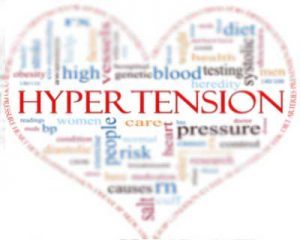- Home
- Editorial
- News
- Practice Guidelines
- Anesthesiology Guidelines
- Cancer Guidelines
- Cardiac Sciences Guidelines
- Critical Care Guidelines
- Dentistry Guidelines
- Dermatology Guidelines
- Diabetes and Endo Guidelines
- Diagnostics Guidelines
- ENT Guidelines
- Featured Practice Guidelines
- Gastroenterology Guidelines
- Geriatrics Guidelines
- Medicine Guidelines
- Nephrology Guidelines
- Neurosciences Guidelines
- Obs and Gynae Guidelines
- Ophthalmology Guidelines
- Orthopaedics Guidelines
- Paediatrics Guidelines
- Psychiatry Guidelines
- Pulmonology Guidelines
- Radiology Guidelines
- Surgery Guidelines
- Urology Guidelines
20 Per Cent Indian Youth Suffer From Hypertension

Over 20 per cent of Indian youth suffer from hypertension problems due to their sedentary lifestyle, experts have said.
The experts warned that hypertension and other complications were also leading to brain haemorrhage.
"Most of the young working population face health problems due to anxiety, stress and the usual 'hurry' that prevails in their day-to-day life," said A. Muruganathan, President of the Hypertension Society of India.
"Changed lifestyle, attitude, behaviour, erratic food habits, smoking, alcohol consumption and pollution lead to lifestyle diseases such as hypertension."
According to Muruganathan, abdomen obesity was another major cause of hypertension.
"Males with waist circumference of more than 90 cm and females with waist circumference of more than 80 cm have more chances of developing hypertension," he said.
Hypertension is a major cause of cardiovascular problems in India which leads to 1.1 million deaths (uncertainty index 0.9-1.3 million) annually.
It accounts for 10.8 per cent of all deaths and 4.6 percent of disability adjusted life years (DALYs) in the country.
Working youth hardly get time to exercise and to have proper diet which leads to hypertension. Diabetes is a common disease among youth in 20s and 30s age group. A sedentary lifestyle only exacerbates the situation, S.S. Das, head of critical care and cardiology at the Kolkata-based Mercy Hospital, told IANS.
Asked if other countries were also witnessing these problems, Das said the scenario was same globally.
He said the medical care facilities were much organised and focused in the West and countries like China. Therefore, they were easily able to tackle the problem.
He said many indulged in self-medication, leading to other problems including thickening of blood vessels and kidney ailments.
"To efficiently tackle diseases like hypertension we need to move from curative to preventive care. Regular health check-ups, reduction of salt, sugar intake, promoting physical activity, early detection and treatment are some of the possible ways to have a preventive approach towards such diseases," said Kenneth Thorpe, Chairman, Partnership to Fight Chronic Disease.
According to Thorpe, over 20 crore people are on the verge of stepping into the dangerous zone of hypertension.

Disclaimer: This site is primarily intended for healthcare professionals. Any content/information on this website does not replace the advice of medical and/or health professionals and should not be construed as medical/diagnostic advice/endorsement or prescription. Use of this site is subject to our terms of use, privacy policy, advertisement policy. © 2020 Minerva Medical Treatment Pvt Ltd